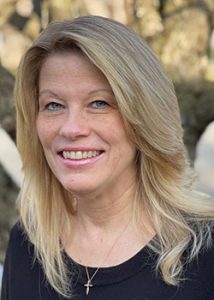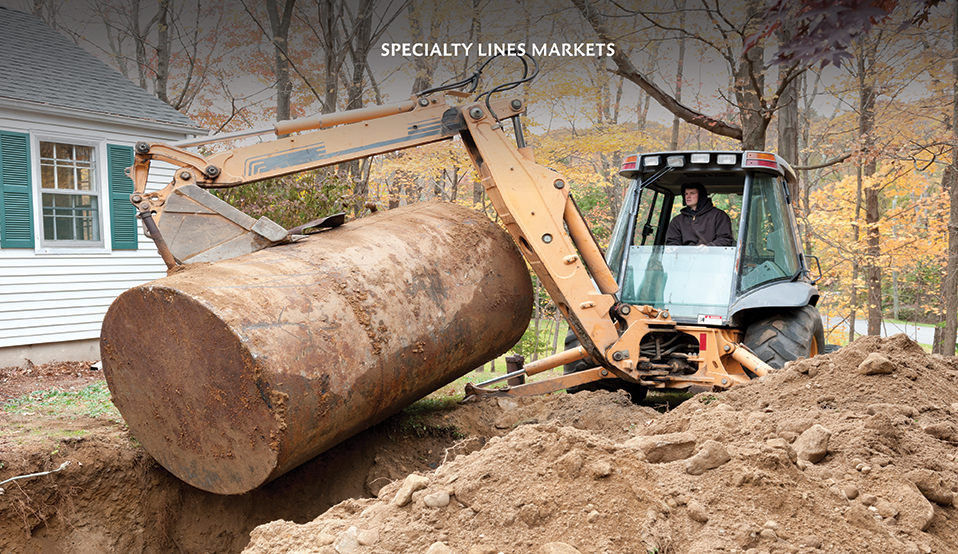THE ECONOMIC DRIVE BEHIND A ROBUST ENVIRONMENTAL AND POLLUTION MARKET
Infrastructure and Jobs Act brings a new surge of business to the environmental and pollution liability market
By Lori Widmer
Don’t look now, but the environmental liability market is growing. In November 2021, the U.S. Congress passed the Infrastructure and Jobs Act, which drove the increase in construction—and in construction-related environmental liability. The $1 trillion investment in the country’s critical infrastructure helped lift a flagging construction industry marred by pandemic slowdowns and supply chain disruptions.
It also brought a new surge of business to the environmental and pollution liability market. “There are broadened appetites as many markets are willing to consider additional environmental and hazardous exposures,” says Drew Easton, executive vice president of Amwins Transportation Underwriters. “But it is key to under-stand the coverage afforded.”
There’s the rub, for as much as there is an appetite for the market, there is a limit to what the market players are willing to absorb. “We are seeing a number of transportation writers exclude or limit pollution coverage,” Easton adds.
“There are broadened appetites as many markets are willing to consider additional environmental and hazardous exposures. But it is key to understand the coverage afforded.”
—Drew Easton
Executive Vice President
Amwins Transportation Underwriters
Market trends
That seems to be a trend for the environmental space, says Jamie Langes, vice president of environmental under-writing for Philadelphia Insurance Companies. The market, she says, is evolving and maturing, but not in terms of adding new products—rather, carriers are reviewing and refining the products they offer currently.
“As products age, carriers have found ways to differentiate their overall programs by investing in their talent as the factor that truly sets them apart from their peers,” says Langes. “Training, expertise, and education have become a focus for carriers for engagement which leads to success, positive culture, and ultimately, profitability.”
It’s a more conservative approach to competing, but one that Langes believes will continue. So, too, will honing their niche offerings, which she says can further differentiate carriers in a crowded space.
“More conservative approaches have been deployed by the more tenured environmental carriers,” she says. “Carriers have started to approach their books of business based upon two tranches: operational exposures (higher frequency of claims) and high-risk exposures (catastrophic claims). Both are trending under the blanket of increased regulatory attention and other factors that are developing, such as environmental justice, aging infrastructure, and emerging contaminants of concern.”

“More predictability within the products also has led to better positioning for all environmental carriers within their larger sphere of the property and casualty marketplace.”
—Jamie Langes
Vice President, Environmental Underwriting
Philadelphia Insurance Companies
Aging infrastructure is of para-mount concern, depending on the industry segment. Kay Zito, associate managing director for Amwins Program Underwriters, says that in the storage tank arena, some businesses could have a tough time locating adequate coverage. “Older underground storage tank systems in the 30-plus-year age bracket are hard to place,” she says.
Still, appetites generally are good, Zito says. Some, she adds, are not shying away from the higher-risk equipment and infrastructure. “We are seeing some carriers who are willing to expand their appetite on select older tank systems.”
That could be due to the competitive landscape in the environmental market, Zito says. With most environmental carriers offering storage tank coverage, there are products available, though she adds that newer tank systems will garner lower premiums than older systems.
Langes sees carriers approaching the market with tighter underwriting controls. “Carriers are more judicious in their underwriting acumen which has led, and will continue to lead, to a more stable environment for rates, terms and conditions in the market in general. More predictability within the products also has led to better positioning for all environmental carriers within their larger sphere of the property and casualty marketplace.”
Claim drivers
While common claim drivers will vary depending on the industry or business, there are common threads among claim trends. Within transportation, Easton sees inadequate training, retraining, and oversight as major factors driving claims, as is distracted driving. “We have seen a rash of misdelivery or cross-drop claims during the loading and unloading process and implosions for failing to properly vent the tanker during unloading,” something Easton says proper training could reduce or eliminate.
Within the storage tank market, Zito says removal and required repairs continue to drive claims activity, as does compliance. “Maintaining regulatory compliance and ensuring proper notification to their respective carriers of planned upgrades is important for the insured and their agents and brokers,” Zito adds.

“As the cost to clean up releases only continues to increase, agents and brokers should encourage their insureds to continue testing their storage tank systems on a regular basis to minimize the potential for future releases.”
—Kay Zito
Associate Managing Director
Amwins Program Underwriters
In addition, Zito says that the up-dated EPA regulations included the need for additional testing of various components of the storage tank system. “This additional testing resulted in the discovery of new contamination. As the cost to clean up releases only continues to increase, agents and brokers should encourage their insureds to continue testing their storage tank systems on a regular basis to minimize the potential for future releases.”
“Climate shift, aging infrastructure, and increased attention for environmental justice drive catastrophic risk exposure,” says Langes. “Indoor air quality, material and waste management as well as compliance with permits for on-site management of operations drive frequency of claims for operational exposures.”
Above it all, climate-related issues seem to blanket claims activity, as does the potential for nuclear verdict. “Big verdicts continue to be published,” says Easton. “While these huge verdicts will never be collected, they create ridiculous expectations from both claimants and counsel. The real challenge remains the impact of social inflation across the routine and frequent loss. What used to be a $30,000 to $50,000 loss has moved well into six figures.”
Advice for agents and brokers
With losses mounting, Easton says an agent’s or broker’s best service to a customer is to become an expert in the coverage—and in the industry. “Know the exposures and necessary coverages. Work with carriers and wholesale experts who live in the space. In today’s insurance space there is no reason for not working with specialists. Developing partnerships with specialists is a key differentiator.”
Plus, develop relationships with the experts who are in the insurance space you are writing, says Zito. “Unless an agent is familiar with this type of insurance, there is value in accessing the coverage via an agent or broker that specializes in this coverage,” she says. “As these policies are generally written on claims-made and reported forms, maintaining retroactive dates is incredibly important to ensure their insured doesn’t lose coverage when changing carriers.”
That type of partnership should include working with the underwriting team. “A part of the environmental carrier positioning increased reliance has been placed on the value of the underwriter’s expertise and technical knowledge,” says Langes. “Working in partnership with brokers and agents, the underwriter can become the differentiator in the relationship. The underwriter can provide claims scenarios, identify risks and exposures for specific risk classes, and aid in contract review in conjunction with the broker to structure a successful environmental insurance program.
“Collaborating together,” Langes says, “the underwriter and broker can position marketing and the product for specific client risks which ultimately aids in creating a mutual partnership to the benefit of the insured.”
For more information:
Amwins
www.amwins.com
Philadelphia Insurance Companies
www.phly.com
The author
Lori Widmer is a Philadelphia-based writer and editor who specializes in insurance and risk management.





